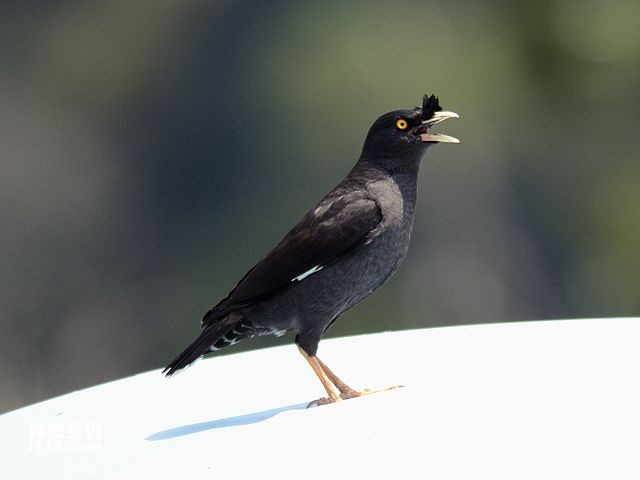Myna (scientific name: Acridotheres cristatellus), also known as parrot, hangao, robin, eagle, blue eagle, driving owl, Jialing, Chinese crested myna, crested myna, agarwood-colored myna, and brother, it was called in ancient times Qin Ji is a kind of bird in the family Starlingidae and genus Myna.

Starlings live in forests in grasslands and mountains. They are good at singing and can imitate the calls of other birds. After training, they can also imitate human speech.
The starling was originally distributed in southern China and the Indochina Peninsula. It is a typical bird of the Oriental world. However, the illegal bird trade has caused the myna to spread rapidly. There are now introduced populations in the Philippines and Borneo, and the myna has gradually become a common resident bird in northern China north of the Huaihe River.
The starling is omnivorous. Through research on the food of the starling, it is found that plant food and animal food basically account for 50% each. The food that the starling often eats includes: seeds of various plants, vegetable stems and leaves, etc., field snails, mole crickets, Coleoptera, locusts, cutworms, etc.
The breeding season of this species is from April to July, with eggs usually laid in May. Each nest contains 4-6 eggs, and the color of the eggs is bright blue; it breeds twice a year in southern China. Nesting is often done under the eaves of traditional Chinese buildings or in tree holes. Sometimes abandoned nests of magpies or black-collared starlings are also used.
This species is not listed on the endangered list, but is threatened by the illegal bird trade and is hunted as a medicinal ingredient. Traditional Chinese medicine theory holds that starlings remove all their feathers and internal organs to obtain meat, which has the function of reducing gas and stopping bleeding, so it is exploited .
In Taiwan, due to the impact of exotic white-tailed starlings, house starlings, etc., they breed everywhere in the wild and compete for habitats and are hunted as pet birds, causing a significant decline in local numbers. Since 2008, it has been reclassified as a rare and rare protected bird. However, the 2015 master's thesis speculated that the reduction of tall grass habitat in the environment may be one of the important factors causing the decline in the number of native starlings in recent years, and may not be directly related to competition from exotic starlings.
animal tags: Starling parrot Hangao robin bird bluebird Jialing brother
We created this article in conjunction with AI technology, then made sure it was fact-checked and edited by a Animals Top editor.